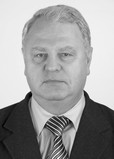Phase Structure and Temporal Indicators of Bar Movement in Clean and Jerk in Weightlifting
Фотографии:
ˑ:
Dr.Hab., Professor A.A. Shalmanov1
PhD, Associate Professor E.A. Lukunina1
1Russian State University of Physical Education, Sport, Youth and Tourism (SCOLIPE), Moscow
Objective of the study was to develop a phase structure of weightlifting exercises based on the kinematic characteristics of barbell movement and dynamic characteristics of the athlete’s interaction with the support.
Methods and structure of the study. The ways to distinguish periods and phases of classical weightlifting exercises were developed using two video cameras for bilateral video captures that helped profile the weight movement trajectory at the ends of the grip, and a dynamometric platform for recording support reaction force vector and computing pressure center coordinates. In determining the boundary moments of phases of movement, the authors proceeded from the logical and content analysis of the exercise, knowledge of the physical mechanism underlying its performance, and requirements for a rational snatch and clean and jerk technique.
Results of the study. According to the developed phase structure of the snatch exercise, based on registration of the kinematic characteristics of the barbell movement and dynamic characteristics of the athlete’s interaction with the support, the authors distinguish: pre-acceleration phase, transition phase, final acceleration phase, unsupported squat phase, supported squat phase.
When jerking the bar, the following phases are distinguished: half-squat, slowdown, pushing out, unsupported squat.
Conclusion. The proposed phase structure of classical weightlifting exercises to a greater extent reflects the essence of the exercises performed, which consists in the implementation of physical mechanisms of lifting the bar and is more unambiguous in determining the boundary moments of the phases.
Keywords: rationality of athletes’ technique, biomechanics of weightlifting exercises.
References
- Donskoy D.D. Biomehanika s osnovami sportivnoy tehniki [Biomechanics with the basics of sports technology]. M .: Fizkultura i sport publ., 1971.288 p.
- Donskoy D.D. Teoriya stroeniya dvizheniy [Theory of the structure of movements]. Teoriya i praktika fiz. kultury. 1991. no. 3. pp. 912.
- Zakharov A.A., Shalmanov A.A., Lukunina E.A. Organizatsionnometodicheskie i nauchnopedagogicheskie sostavlyayuschie biomehanicheskogo kontrolya v sporte [Organizational, methodological and scientificpedagogical components of biomechanical control in sport]. Fizkultura i sport: vospitanie, obrazovanie, trenirovka. 2018.no. 5. pp. 2629.
- Lukashev A.A. Analiz tehniki vyipolneniya ryivka tyazheloatletami vyisokoy kvalifikatsii [Analysis of jerk technique of elite weightlifters]. PhD diss.; SCOLIPE publ.. M., 1972. 225 p .: ill.
- Medvedev A.S. Biomehanika klassicheskogo ryivka i tolchka i osnovnyih spetsialnopodgotovitelnyih ryivkovyih i tolchkovyih uprazhneniy [Biomechanics of classic jerk and main special preparatory jerk exercises]. Izhevsk: Olympus Ltd. 1997.32 p.
- Shalmanov A.A., Levy V., Lanka Y. Operativny i tekuschiy biomehanicheskiy kontrol v sporte (problemyi i puti resheniya) [Operational and current biomechanical control in sports (problems and solutions)]. Nauka v olimpiyskom sporte. 2013. no. 4. ppp. 4045.
- Shalmanov A.A. Osnovnyie trebovaniya k ratsionalnoy tehnike pod'ema shtangi v klassicheskih tyazheloatleticheskih uprazhneniyah [Basic requirements for rational bar lifting technique in classical weightlifting exercises]. IV res.practical conference “Innovative technologies in athletic training” 30 Nov 2 Dec 2016. M., 2016. pp. 9096.
- Shalmanov A.A., Popov G.I. [ed.] Vzaimodeystvie s oporoy v klassicheskih tyazheloatleticheskih uprazhneniyah. Opornyie vzaimodeystviya v sportivnyih uprazhneniyah [Interaction with support in classical weightlifting exercises. Support interactions in sports exercises]. M .: RSUPESYT publ., 2018. pp. 72112.



 Журнал "THEORY AND PRACTICE
Журнал "THEORY AND PRACTICE